A lot depends on the details. There are some little things that you can not think about, but they immediately catch the eye of strangers. A good hostess will never lose her face, so dust, dirt, plaque - all this has no chance in your home. Everything must be perfect - from the rug in the hallway to the sink in the bathroom. Particular attention should be paid to plumbing - plaque on it is formed for various reasons and spoils the look of the interior. And if you got an apartment from past tenants who are not distinguished by cleanliness, then old traces can be very persistent. Today we will talk about ways to remove plaque in the toilet using various improvised means.
Read in the article
- 1 Why plaque forms on plumbing
- 2 How to remove limescale from plumbing
- 2.1 Abrasives
- 2.2 Alkaline compounds
- 2.3 Acid
- 2.4 Chlorine
- 2.5 soda
- 2.6 Electrolyte
- 3 How to remove rust from plumbing
- 3.1 Acid formulations
- 3.2 washing powder
- 4 How can you remove urinary stone from ceramics
- 4.1 Acid
- 4.2 "White"
- 5 How to prevent the formation of plaque
Why plaque forms on plumbing
The most common reason for the formation of plaque on plumbing is the quality of water, which has numerous impurities. And before you start fighting deposits, you need to analyze this situation and think about how to prevent its recurrence. The fact is that if you deal with the plaque or even change the plumbing, everything can happen again. So you should think about how to fix it. Quality filters can partly solve this problem. And coupled with regular preventive cleaning, yellow plaque will not have the opportunity to spoil your mood again.
In addition to the quality of the water, the condition of the plumbing system can be the cause of the formation of deposits. If the water main is in old age, then the water will contain rust impurities - they color the water. At first glance, you may not see them, but constant contact with the surface leads to the settling of particles and the formation of plaque.

The reason for the formation of unsightly marks may be inaccurate use of the toilet. Especially often this happens in families where there are small children who do not know how to properly use the flush. In this case, a yellow-brown plaque of urinary stone with an unpleasant odor is formed, and the deposits themselves can be a source of harmful bacteria.
Before talking about which cleaning methods are most effective in combating plaque, you need to be sure to note that any type of raid must be fought immediately, preventing it from gaining a foothold on surfaces. Regular cleaning and preventive measures will help get rid of the problem without the use of mechanical cleaning agents. Any abrasive products damage the surface of the ceramic, and this leads to the fact that the dirt is more firmly fixed and becomes resistant.
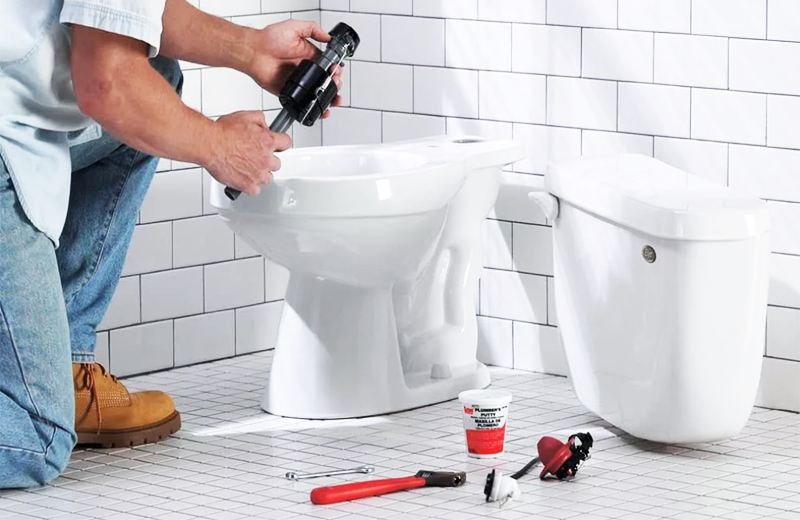
How to remove limescale from plumbing
Limescale is the result of very hard water. Numerous impurities, like heavy particles, settle on ceramics and stick to it, forming an uneven loose surface. If you miss the time and do not remove this plaque, it turns to stone due to the salt content and becomes stone-durable, and here it is very difficult to cope without an abrasive. So, what folk methods can be used and how to wash limescale.
Abrasives
As already mentioned, an abrasive is an extreme case. Its use is undesirable, since such products leave scratches on the surface of smooth ceramics. Even microscopic damages invisible to the eye become the basis for the development of bacteria and the formation of persistent deposits.
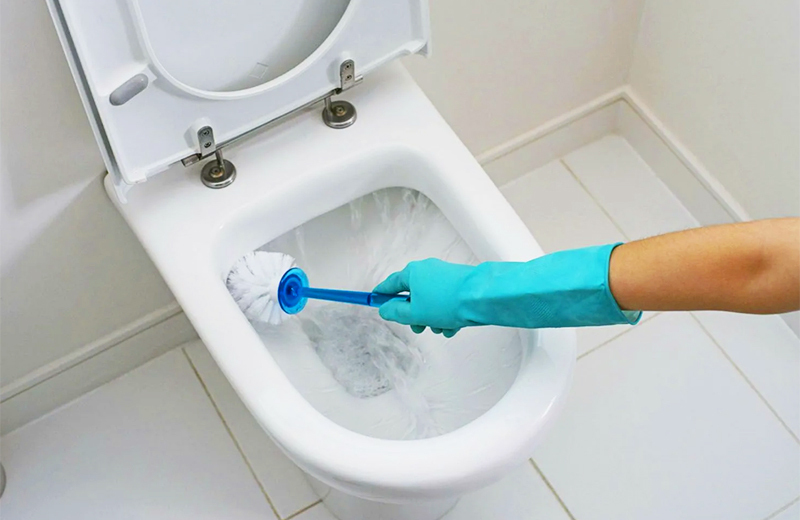
Alkaline compounds
Alkaline compounds cope well with lime deposits. They are often used to clean sewer pipes. They are able to dissolve salt particles without mechanical action. But there are some nuances. For example, if you have plastic plumbing, then it is better to refuse such aggressive chemistry. Plastic toilet bowls are often used in dry closets in the country. Caustic alkali, like acid, can hopelessly spoil the surface of even hard plastic.
To use chemical alkaline solutions, you must first moisten the places of contamination inside with them and leave for a while. Ideally, overnight. After that, it remains only to wash the almost dissolved plaque with a brush-brush and rinse with water. There is another option - so that the alkali does not flow down the smooth walls of the toilet bowl, you can apply the product on cloth or paper towel and cover the place of plaque with it, and then after a couple of hours also clean and rinse water.

Acid
Various acids are used to clean limescale. For example - the most common household acetic acid. It is poured into the toilet at night and left under a closed lid. The next day you need to clean with a brush and rinse several times with clean water. If you did not manage to achieve what you wanted the first time, repeat the procedure again.
Acetic acid is inferior in its action to hydrochloric acid, so there are products for cleaning pipes and toilets based on it. But remember - it should never be used if you have plastic pipes. And even if the sewer pipes are cast iron or metal, you should not get carried away with this method, because hydrochloric acid can provoke the active development of rust. A 33% solution is used for processing - it is quickly sprayed over the surface of the toilet bowl with a spray gun or from a bottle with a thin spout. The waiting time during processing is no more than 20 minutes, after which you need to thoroughly rinse the surface several times with clean water.
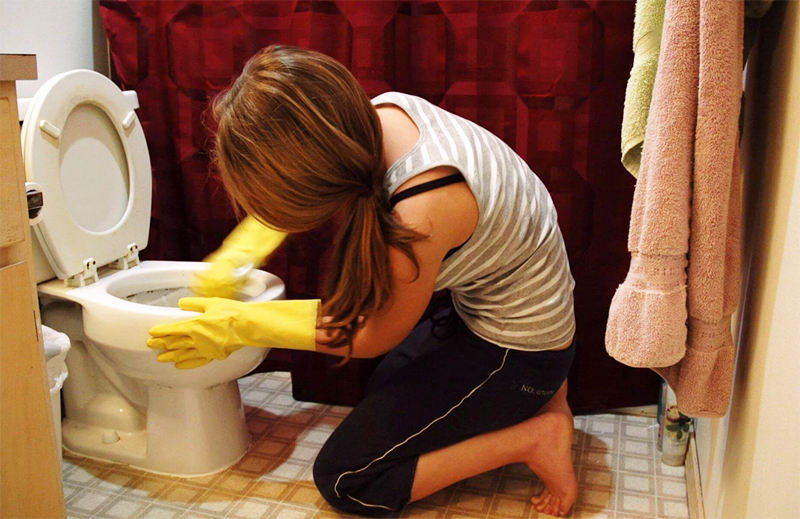
Another type of acid effective for removing limescale is oxalic or citric acid. These acids are not as aggressive as acetic, and even more so hydrochloric, they will help to cope with age-old deposits. Products based on these acids are applied to the surface for several hours, after which they are brushed and washed off.
Chlorine
Chlorine-based products are excellent at killing bacteria. You can use special formulations, or you can use the usual "Whiteness", which very conveniently began to be produced in the form of a gel. "Whiteness" is applied to the surface for several hours and then the plaque is brushed off and washed off with water. Corrosive chlorine fumes can harm the respiratory system, so you need to work with this composition only in a protective mask and gloves.
soda
This is an unusual type of tool. But he also has a right to exist. The most versatile is Coca-Cola.
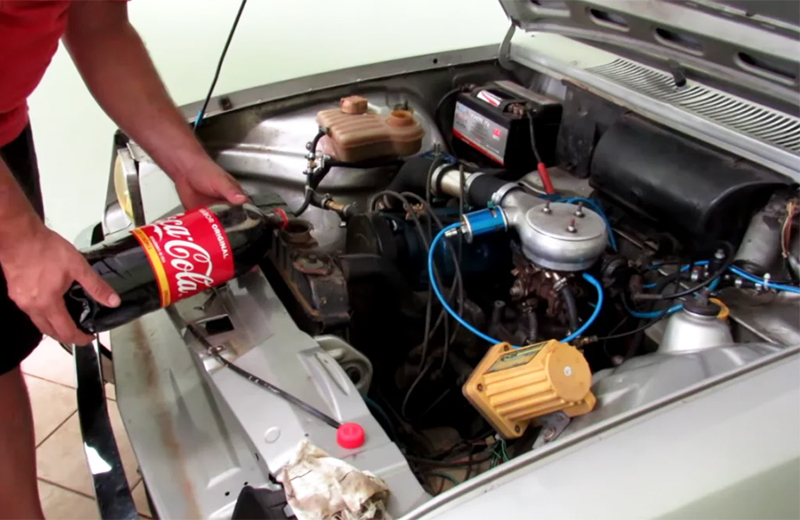
So cola also does an excellent job with the raid. The secret to the effect of soda is in the presence of a large amount of citric acid. Coke is poured into the toilet at night and then cleaned as usual.
Electrolyte
If your family has a car, then you are probably the happy owner of a universal remedy for plaque and scale - electrolyte. Just one glass in the toilet bowl, distributing it along the walls, waiting 15 minutes - and everything will work out. Just remember that this method is incompatible with plastic pipes.
How to remove rust from plumbing
Limescale has a grayish tint, but if you find red smudges, then it's rust. So, how to clean the toilet from rust.
Acid formulations
Rust is afraid of acid, and here you can use all possible arsenal. It’s worth starting with orthophosphoric acid - half a glass of a 7% solution is enough to remove traces of rust in 15 minutes.
Another great composition for removing old rust is a mixture of a tablespoon of soda and a glass of table vinegar. You will instantly get a plentiful foam that needs to be applied to rust smudges.
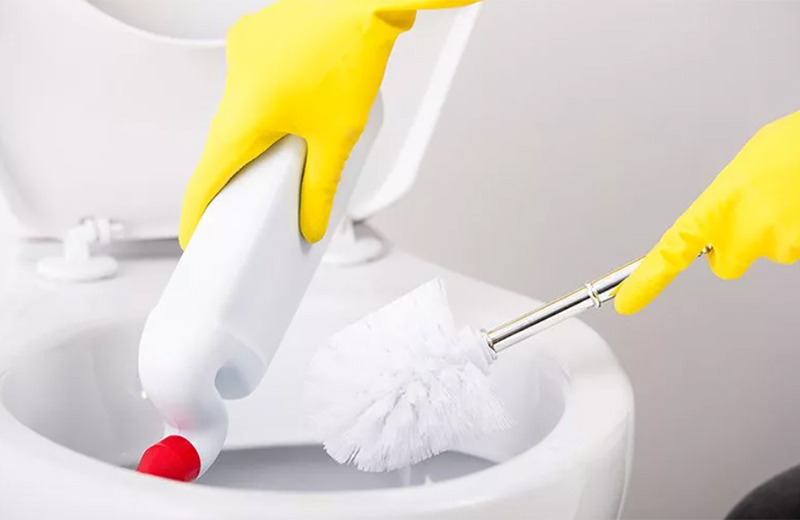
Oxalic acid gives a universal effect in the fight against rust deposits. If you purchased it in the form of crystals, apply them to a cloth and dissolve in a small amount of alcohol. Then use this cloth to wipe the surface with a coating. Allow the composition to work for 10 minutes and then rinse the plumbing with clean water.
washing powder
The first traces of rust deposits are easily removed with washing powder. Moisten the surface and sprinkle with washing powder. It takes about 1 hour to dissolve the plaque, then clean everything with a stiff brush.
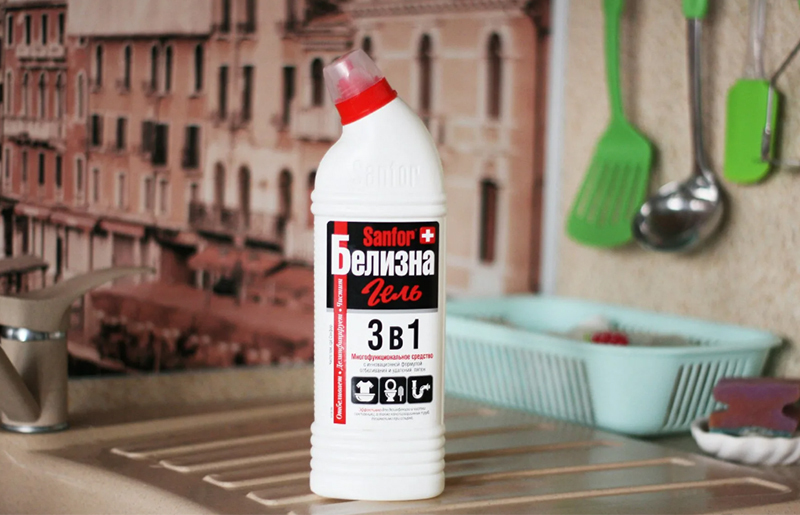
How can you remove urinary stone from ceramics
Urinary stone is a yellow-brown plaque on plumbing with a pungent odor. Usually such traces are deposited under the rim or under the seat. Fighting him is not so difficult, the main thing is to do it on time.
Acid
This is where acid comes in handy. Moreover, vinegar and lemon - the most trouble-free way to eliminate plaque. To clear the urinary stone, the surface is treated with 9% table vinegar and left overnight to act. Usually in the morning it is enough just to wash off the water - and you no longer see traces. Citric acid in crystals is mixed with soda in dry form, and then moistened with water and applied to the places of pollution during the reaction and left for about an hour and a half. The same effect gives soda and vinegar for cleaning. After you need to lightly walk with a brush and rinse with water.
"White"
To process "Whiteness", you first need to get rid of the water in the toilet, then pour the solution in its place and leave it overnight. In the morning, just flush the water.
How to prevent the formation of plaque
It is always better to apply preventive measures than to deal with actual pollution. Moreover, it will not require any special efforts or significant funds from you.
One of the simplest solutions and the best remedy for prevention is to use special tablets in the cistern. They soften water, neutralize substances that can settle in the sediment.
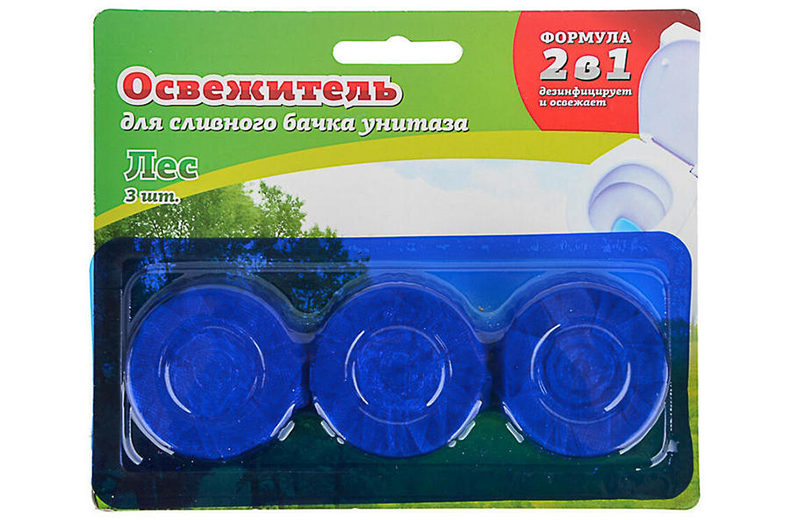
In addition to tablets, on sale you will find special containers with gel that are attached under the rim of the toilet bowl. They gradually dissolve with each flush.
If you see rusty smudges, it may be time to replace the old metal pipes and also install a filtration system.
At least once a week, when cleaning at home, you need to treat ceramics with products containing chlorine. This will help kill bacteria and remove plaque.
The toilet itself should be cleaned regularly with detergent.
And a few more tips - in the video.
Do you have your own recipe for keeping the toilet clean? Share it in the comments!
What are these blocks you have so rotten? Never had a problem with gas silicate blocks...
We saved up for a long time, we had to severely limit ourselves in the usual things, until we found out ...
In general, as far as I understand, this is done differently in different regions. Yes, looking at...
I have such a question if I have a central gas pipe that runs right next to the house p ...
Especially with the insulting hint that not new yarn was used in my product, but ...
Hello. It is very unpleasant that you use other people's photos in articles without asking ...
With my own hands, I can't build very well. My wife and I decided to buy a bath from the tower ...
Partly, I liked the interior, I was impressed by the estate, I started to smile, only …
In my opinion, going to the village is too much, if there are no plans to take care of the household. Could…
It looks more like Lerchek bartered furniture, renovations, décor, and clothing. And there h...
When Buryatia was included in the Far Eastern Federal District, housing prices jumped more than 2 times due to this ...
It's a pity we don't have such a program as in the Far East. I had to buy a country ...
I've been looking at buying a sauna for a long time. I recently found exactly that one at an exhibition in Zyablikovo ...
A friend designed a garage for me. It remains only to find a team for implementation. Well on…
Guys, it's not complete. You do not mention Domorost, but still these guys have a problem ...
